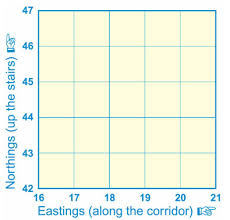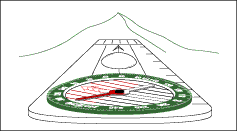
I have used Scarpa shoes and boots in the past and have always been impressed with the mountain pedigree the brand has. So, I was very welcome to receive the SPIN and the SPIN ULTRA for testing.
The SPIN, in the words of Scarpa say, ‘… with more cushion and protection than the Atom, but a lighter, lower-profile design than the Neutron, the new Spin is the Goldilocks of our Alpine Running collection, for those who want both support and simplicity on rugged trails and craggy ridge lines.’

I will discuss and write about the SPIN ULTRA at a later date.
The SPIN is noticeably light (252g for EU42) and flexible. From the first look one can immediately see that this is a race or fast training shoe designed for a mountain environment. For sure, it’s a trail shoe, but I would extend that to be a mountain/ alpine shoe. It has ‘skyrunning’ written all over it and certainly from initial outings it immediately felt like VK’s and SkyRace (sub 42km) terrain would sit perfectly in the SPIN list of ‘go to’ uses.

The upper is mesh and therefore very breathable, structure and support of the upper comes from welded PU overlay. One of the plus sides of this, as in other shoes using this method, there are no seams that can cause irritation or rubbing inside the shoe.
 The lacing is substantial with 5 sets of eyelets and the additional 6th eyelet should you wish to lace-lock. With a comfortable and padded auto fit tongue which extends slightly higher than other shoes I have tested, this is perfect for stopping any discomfort where the top of one’s foot joins the lower leg. There is a ‘lace-garage’ which is so obviously great, I have never understood why all run shoes do not use this method, or at least something similar.
The lacing is substantial with 5 sets of eyelets and the additional 6th eyelet should you wish to lace-lock. With a comfortable and padded auto fit tongue which extends slightly higher than other shoes I have tested, this is perfect for stopping any discomfort where the top of one’s foot joins the lower leg. There is a ‘lace-garage’ which is so obviously great, I have never understood why all run shoes do not use this method, or at least something similar.

 The heel is padded and plush and really holds the foot with comfort and security. Very noticeable when running or hiking uphill is the hold the shoe gives; it is very reassuring.
The heel is padded and plush and really holds the foot with comfort and security. Very noticeable when running or hiking uphill is the hold the shoe gives; it is very reassuring.

It has a ‘sock-like’ fit (SOCK-FITLW by Scarpa) which is just perfect as it provides a wonderful, secure and comfy hold of the foot.

The toe box is well shaped, allows for toe splay but the SPIN is more of a ‘precision’ shoe designed for technical trail and as such it has a narrower fit but not very narrow. Certainly, if you need or require a wide toe box, the SPIN is unlikely to be for you, but you should try it… It has a toe bumper which provides some protection from contact with rocks or debris.

With a 4mm drop one needs to be a more efficient runner. It’s a shoe with cushioning (24mm/20mm) but not excessively so, hence I see that is a shorter/ mid-distance shoe. The midsole is EVA and I would say is on the firmer side, but after several runs one can feel it soften without compromising the shoe. It has a rock-plate, and this works really well offering great protection via a H-EVA Plate.


 The outsole is Vibram which is known throughout the world. MegaGrip is extremely popular and although aggressive, it is not extremely aggressive. It can handle mud but not really sloppy stuff. Then again, very little shoes can do well at everything. If running in lots of mud, there would be better outsoles than this. But the MegaGrip is perfect for the SPIN intentions – mountains, ridges, trails, rocks in wet or dry conditions. The lugs are 4mm and quite spaced out. Grip is very good on a wide variety of surfaces, but it works best on rock, ridges, loose gravel and soft ground. You will see the the SPIN has cut outs in the sole and here you can clearly see the rock-plate. The cut aways help reduce weight and increase the flexibility of the shoe. This is noticeable, especially in the propulsive phase.
The outsole is Vibram which is known throughout the world. MegaGrip is extremely popular and although aggressive, it is not extremely aggressive. It can handle mud but not really sloppy stuff. Then again, very little shoes can do well at everything. If running in lots of mud, there would be better outsoles than this. But the MegaGrip is perfect for the SPIN intentions – mountains, ridges, trails, rocks in wet or dry conditions. The lugs are 4mm and quite spaced out. Grip is very good on a wide variety of surfaces, but it works best on rock, ridges, loose gravel and soft ground. You will see the the SPIN has cut outs in the sole and here you can clearly see the rock-plate. The cut aways help reduce weight and increase the flexibility of the shoe. This is noticeable, especially in the propulsive phase.


The SPIN comes with two foot beds. One minimalist and the other providing more cushioning and structure. This is a great idea! I personally used the more structured foot bed which secured the rear of my foot more. Switching between the foot bed really changes the feel of the shoe, so, if you prefer something more minimal. You will prefer the thinner of the two.

 Sizing is true to size, I use an EU44 and these fitted as expected.
Sizing is true to size, I use an EU44 and these fitted as expected.
IN USE
 The SPIN has great comfort and the sock-like fit is just perfect. The lacing system is superb at holding the foot and it is easy to adjust should you need. For example, I have a high instep, so I like to loosen my laces but not at the compromise of a secure foot hold. The addition of the the 6th eyelet allows for different lacing options; I didn’t need to lock lace as the foothold form the SPIN is so good. The lace garage is perfect for getting laces out of the way. One of the revelations is the heel area. It’s plush, extremely comfortable and is arguably the best hold I have had from any shoe. Climbing there is no movement or slipping.
The SPIN has great comfort and the sock-like fit is just perfect. The lacing system is superb at holding the foot and it is easy to adjust should you need. For example, I have a high instep, so I like to loosen my laces but not at the compromise of a secure foot hold. The addition of the the 6th eyelet allows for different lacing options; I didn’t need to lock lace as the foothold form the SPIN is so good. The lace garage is perfect for getting laces out of the way. One of the revelations is the heel area. It’s plush, extremely comfortable and is arguably the best hold I have had from any shoe. Climbing there is no movement or slipping.
The upper is very breathable and my feet were comfy in either wet conditions or hot conditions. Drainage is good. The welded overlay is adequate and provides good stability. Toe bumper could be better, but it is a minor complaint.
On technical trail, foot roll is minimal, but the SPIN does have a wasp like (figure of 8) shape and so depending on your foot shape, you could have some roll? I had no roll at all. I got no issues with the SPIN rubbing my ankles, a problem I have had with other shoes on technical terrain, this is a real plus!
Cushioning is on the harder side and lacks life and bounce but that is compensated for with great flex, especially in the propulsive phase. Also, you have two foot bed options and the more padded/ supported option was a real boost for me. They are very comfortable shoes.
The MegaGrip outsole works really well on a whole mix of terrain, wet or dry. But it works best on soft-ground, rocks and technical trail. Protection is very good but occasionally, you may find a stone getting in one of the gaps in the cutaways of the sole. It will not stay there, but if it is sharper, you may just feel it through the rock-plate.
CONCLUSION
I have been using Scarpa for many years, the Charmoz a personal favourite. But I have never used a run shoe from the brand. The SPIN has been a revelation and certainly for runs up to 4-hours on technical/ mountainous routes, it’s a shoe I will use time and time again. The overall package is excellent combing lightweight, responsiveness, feel for the ground, cushioning, great comfort and excellent grip in most scenarios. It’s a shoe for faster training or racing in the mountains.
Highlights come from excellent lacing, the sock-like fit, the shoes weight and the heel box.
There is little not to like in the SPIN. It is more of a precision shoe, but the fit is not as narrow as others, so, you would need to try them on to find out if they would work for you.
The only negative, for me, is the cushioning is a little hard and lacks a little life. It is a minor point and actually does not impair how the shoe performs, however, for some, it may influence how enjoyable the SPIN is to wear.
Specs:
- 4mm drop
- 252g for EU42
- Upper Mesh w/ welded PU overlay
- Insole H-EVA Plate
- Midsole EVA-CM
- Outsole Vibram Fixion/ MegaGrip
- Cushioning 24mm/20mm
- Sock like fit
- Lace storage
- Medium cushioning and protection
- Choice of insoles

Please support this website. I believe everyone deserves to read quality, independent and factual articles – that’s why this website is open to all. Free press has never been so vital. I hope I can keep providing independent articles with your help. Any contribution, however big or small, is so valuable to help finance regular content. Please support me on Patreon HERE.
Follow on:
Instagram – @iancorlessphotography
Twitter – @talkultra
facebook.com/iancorlessphotography
Web – www.iancorless.com
Web – www.iancorlessphotography.com
Image sales –www.iancorless.photoshelter.com
























